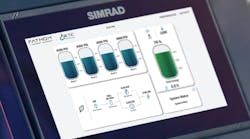Standard Operating Procedures/Standard Operating Guidelines are a fundamental safety practice, nor only for emergency services, but business and industry as well.
In today's society it is essential that all emergency service organizations develop, adopt, and implement standard operating procedures and guidelines. The principal of public kindness is no longer acceptable practice. Concepts, such as sovereign immunity (individual vs. government) have been significantly limited and narrowed by the courts.
Many of the federal, state, and provincial laws allow for suits against individual leaders of emergency service organizations. Terms such as "duty of care," "breach of omission or commission," and "joint and several liability" are entering the vocabulary of emergency service personnel.
One important way to prepare for this challenge is to develop, adopt, and implement a comprehensive set of Standard Operating Procedures/Standard Operating Guidelines (SOP/SOGs.) Standard Operating Procedures/Standard Operating Guidelines are a fundamental safety practice, nor only for emergency services, but business and industry as well.
During the process of compiling SOP/SOGs, the difference between these varied documents may become blurred. For instance, often the distinction between policy and procedure do not seem so clear. Policy is different from a SOP/SOG. All procedures and guidelines are based on an over-riding policy. Policy should be viewed as the attitude, philosophy and intent of top management to the organization's personnel. It provides a framework and guidance to organization personnel in making decisions. To aid in the development of SOP/SOGs, understanding specific definitions of terms is essential.
- Policy - A guiding principle or course of action adopted toward an objective or objectives. Policy describes the general principle that will guide behavior or a definite course or method of action to direct and determine present and future decisions.
- Procedure - Prescribes specific ways of doing specific activities. A procedure regulates the formal steps into an action. It provides a series of steps followed in a particular order.
- Guideline - A statement, indication, guide or outline of policy by which to determine a current or future course of action. Regulation - A rule or order prescribed by authority to regulate conduct.
- Rule - A principle set up by authority, prescribing or directing action or forbearance.
In the evaluation of policy it is essential to obtain input from the organization's members. The following are questions that must be considered regarding policy:
- Is it founded on sound judgment?
- Is it reasonably attainable?
- Is it within legal and/or regulatory boundaries?
- Is it definite, positive, and clear?
- Does it need further definition or explanation to those affected?
- Is it applicable to all organizational units?
- Is it flexible?
- Should it be flexible?
- Does it reflect the general thinking and enforcement philosophy of all levels of personnel?
- Will or must it be supported by procedures, guidelines, rules, and regulations?
- Can it be enforced?
- Will it be enforced?
The following is a visual reference for the difference in terms. Example:
- Policy - Go from Point "A" to Point "B".
- Procedure - Begin at Point "A" go to Point "B" by following the prescribed directions.
- Guideline - Begin at Point "A" go to Point "B" but does not give explicit directions as a procedure.
- Rules and Regulations - Do not cross any line, do not backtrack.
Conducting a Needs Assessment
Whether it is the starting point or part of the process, the SOP/SOG process should include a "needs assessment". Every emergency service organization should periodically conduct a formal review of SOP/SOGs. These assessments should be conducted by a task force/committee of organizational members representing all ranks and possibly other agencies (e.g. an attorney or policy analyst from the local government). The product of this formal review results in a document to be used as a "roadmap" for developing SOP/SOGs.
The needs assessment process must be consistent and systematic. The product should include a written analysis of current SOP/SOGs, recommendations, and the rationale for changes (if any), and any priorities and a plan for action. Although major changes in legal and/or operational requirements will prompt a formal needs assessment, the process should be performed annually to help keep SOP/SOGs current and valid.
While prioritizing, it is important to remember that SOP/SOGs must reflect reality. Creating SOP/SOGs that cannot be implemented with existing resources serves little purpose and may create a safety hazard. Revisions to critical health and safety SOP/SOGs should receive a high priority in the action plan since they influence the health and safety of responders and the effectiveness of operations.
Formulation Procedure
Decrees issued from those in charge often do not receive widespread support. To expect the members of an emergency service organization to enthusiastically support SOP/SOGs when they are formulated and issued without member support and involvement is not realistic. However, the formulation procedure can be an integral component in having the SOP/SOGs be effective and realistic, as well as supported.
Although the exact methods used to develop SOP/SOGs will vary, certain strategies will help define a successful process. The needs assessment process establishes the foundation for the SOP/SOG development effort. Various organizations have found the following recommendations very effective in developing and implementing effective SOP/SOGs.
Inform the membership as to the need to develop, adopt, and implement SOP/SOGs and how the process should be undertaken. Build the development team. Commit to utilizing task forces, committees or guideline groups involving the members of the organization to establish the processes they will use to do their jobs.
SOP/SOGs are most effective when members of the organization are included in the development process. As a general rule, organizations should get input from all groups potentially affected with the SOP/SOG.
A key variable in determining success or failure during implementation is keeping the product "user friendly". The following are some suggestions to help attain this goal:
- Level of detail - SOP/SOGs should provide only broad procedural guidelines, not specific details of task performance.
- Clarity and conciseness -SOP/SOGs must be clear, concise, and written in plain English language. Clear and simple statements are the best way to describe actions in SOP/SOGs using language members can easily understand.
- Target audience - Generally, SOP/SOGs should be written to address the needs and educational level of the majority of the organization's members.
- Flexibility and ambiguity - To be effective, organizational guidelines (SOGs) must be clear and concise. An organization's SOGs should be precise but inherently flexible, permitting an acceptable level of discretion that reflects the nature of the situation and the judgment of the incident commander.
A related issue involves the use of the terms "shall" and "may" when writing SOP/SOGs. Personnel generally consider an action preceded by the word "shall" to be an inviolate rule (SOP), while using the term "may" implies greater flexibility and discretion by personnel (SOG).
SOP/SOGs are not training manuals. They are broad organizational guidelines for performing tasks in which members have been trained to accomplish safely and effectively.
A standard format for SOP/SOGs helps streamline the writing process. Different formats may be used for SOP/SOGs depending on the intended audience and purpose. Several items are usually included in a SOP/SOG such as:
- Numbering system
- Effective date
- Expiration/review date
- Title
- Description of purpose or rationale statement
- Authority signature(s)
- Scope
- General procedures
- Specific procedures
- References
Periodic Review
Standard Operating Procedures and Guidelines are not static documents. All SOP/SOGs should be regularly reviewed and updated. This is not to suggest that every SOP/SOG should be changed annually; but each one should be checked for updating, correcting, fine-tuning, or otherwise changed if necessary. The procedure of having the SOP/SOGs reviewed and revised is more important than how many SOP/SOGs are changed. Change, just for the sake of change, is not recommended. Personnel become familiar and comfortable operating under established procedures/guidelines. If they are valid, they need to be left in place.
Evaluation is not the same as performance monitoring. The purpose of performance monitoring is to make sure that personnel comply with the SOP/SOG and perform it correctly. In effect asking, "Are we doing things right?"
Evaluation on the other hand, looks at the same employee action, but asks, "Are we doing the right thing?" The goal in this case is to assess and redesign the SOP/SOG.
Most organizations strive to review SOP/SOGs annually. If the resources are available, this is desirable. Many smaller organizations conduct an annual review but only cover one-half of the SOP/SOG manual. This provides a bi-annual review and individual SOP/SOGs are changed when it becomes necessary.
Content for SOP/SOGs for aspects of emergency services operations can come from many sources. SOP/SOGs of other organizations serve as great starting points as well. Use these tools as "guidance" as you create an SOP/SOG that works for your organization.
Lesson #14
Standard operating guidelines serve as an excellent method to establish safety performance expectations, but they must be read, trained on, supervised to and enforced to achieve their goal.
Safety 101 - A new series from the technical and administrative perspective, designed to help you reduce emergency responder injuries, illnesses, property loss and death!
Related:
- Safety 101: An Introduction
- Safety 101: Lesson 1
- Safety 101: Lesson 2
- Safety 101: Lesson 3
- Safety 101: Lesson 4
- Safety 101: Lesson 5
- Safety 101: Lesson 6
- Safety 101: Lesson 7
- Safety 101: Lesson 8
- Safety 101: Lesson 9
- Safety 101: Lesson 10
- Safety 101: Lesson 11
- Safety 101: Lesson 12
- Safety 101: Lesson 12
- Safety 101: Lesson 13
Dr. William F. Jenaway, CSP, CFO, CFPS is Executive Vice President of VFIS and has over 30 years experience in Safety and Risk Management, in the insurance industry. Bill is also an adjunct professor in Risk Analysis in the Graduate School at Saint Joseph's University in Philadelphia. He was named "Volunteer Fire Chief of the Year" as Chief of the King of Prussia, PA, Volunteer Fire Company, and is the author the text Emergency Service Risk Management.





